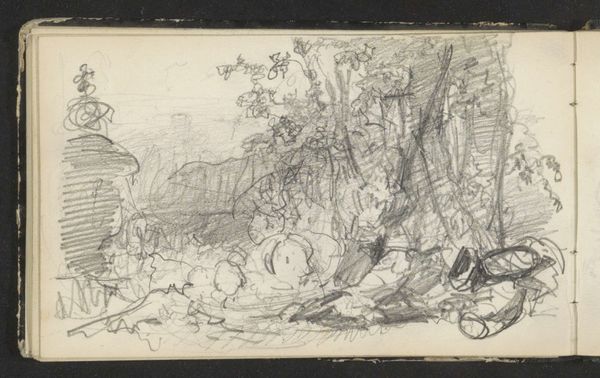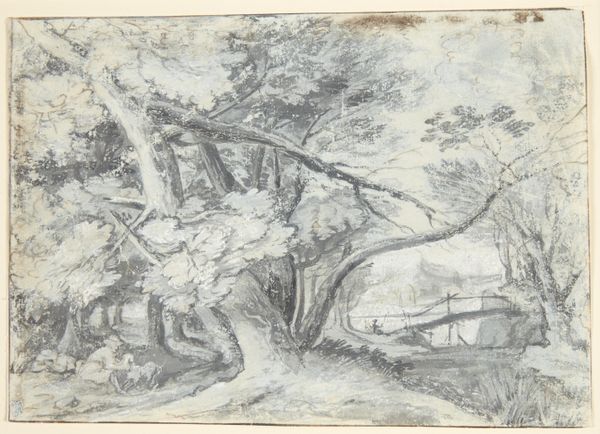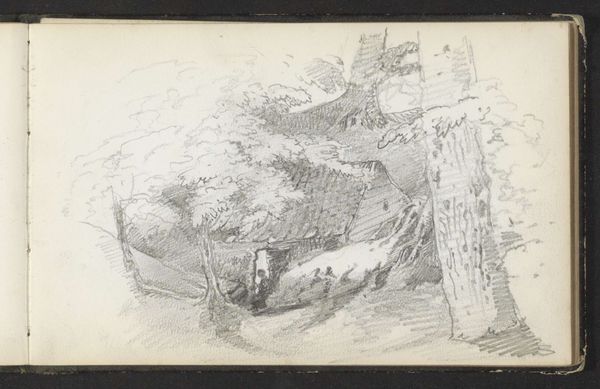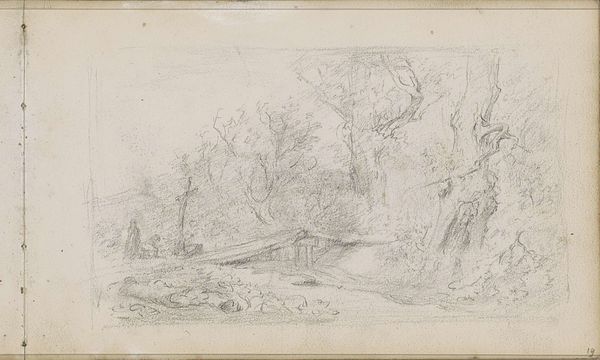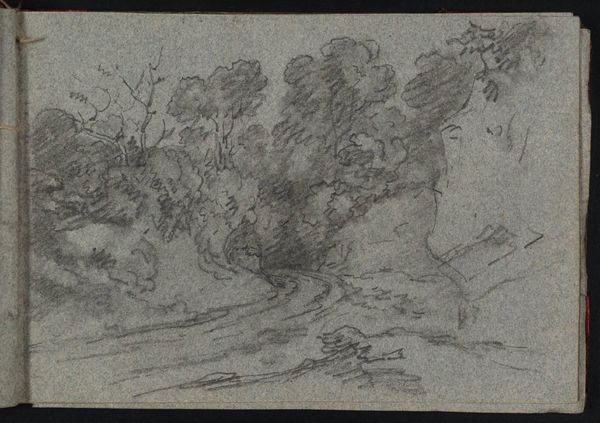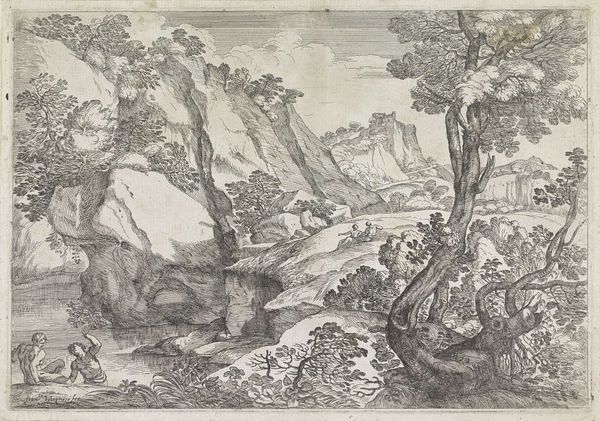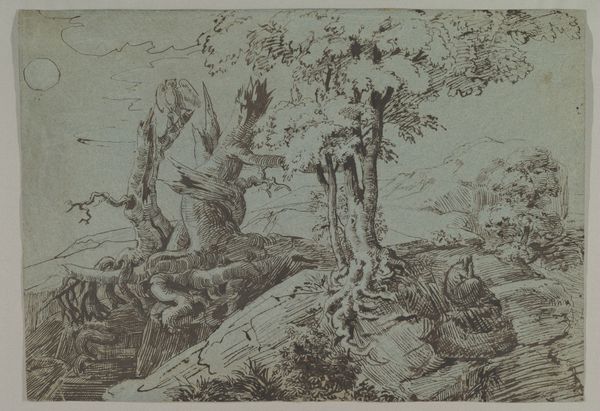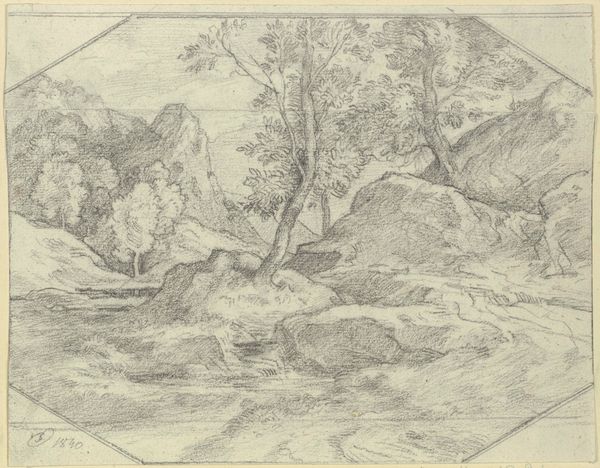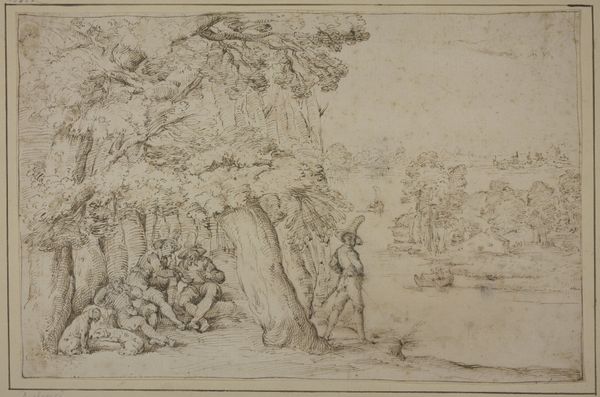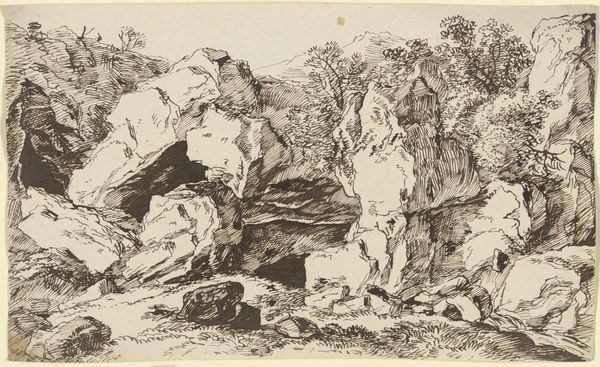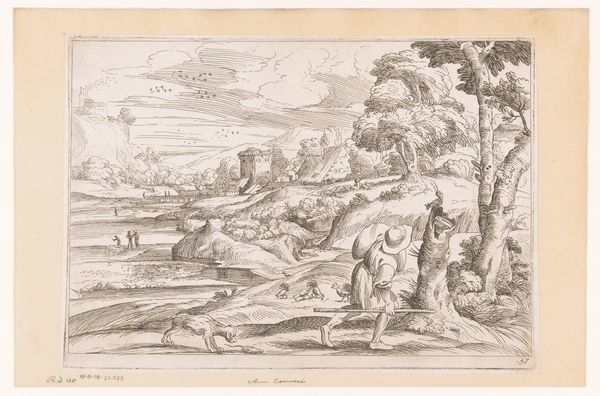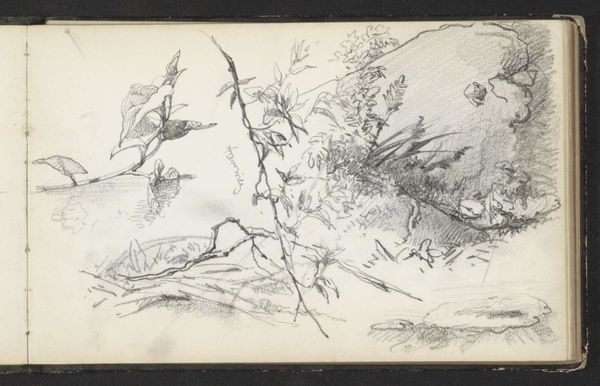
Copyright: Rijks Museum: Open Domain
Editor: We’re looking at "Bos met boomwortels op de voorgrond," or "Forest with tree roots in the foreground," a pencil drawing by Maria Vos, created around 1856 to 1870, now at the Rijksmuseum. There's a delicate, almost brooding quality to the woods she's captured. What draws your eye when you look at this image? Curator: My gaze lingers on those exposed roots. They're not merely botanical details; they become potent symbols. Roots, in mythology and folklore, represent origins, ancestry, and the hidden aspects of ourselves. Think of the World Tree, Yggdrasil, its roots reaching into the depths of the underworld, connecting us to primal forces. Does the tangled nature of the roots suggest something to you about our relationship with nature, or perhaps with our own past? Editor: It's almost claustrophobic – the way the roots and trees seem to crowd the space. Maybe there's something about nature being overpowering. Curator: Precisely. Romanticism, a prominent movement during that era, frequently explored the sublime – that sense of awe mixed with terror when confronted by nature’s immensity. This isn’t a neatly manicured garden; it’s a raw, untamed space where the rational mind might feel uneasy. And Vos, as a female artist, capturing this space...do you think that adds another layer to how we might interpret the artwork? Editor: Possibly, though I'm not sure how just yet...I need to think more about that. It's fascinating to consider the weight each symbol carries and how that impacts our interpretation. Curator: Exactly. The visual vocabulary informs cultural memory. It helps us perceive both the past and the potential trajectories for our collective futures. Thanks for helping me to pause and consider this.
Comments
No comments
Be the first to comment and join the conversation on the ultimate creative platform.
